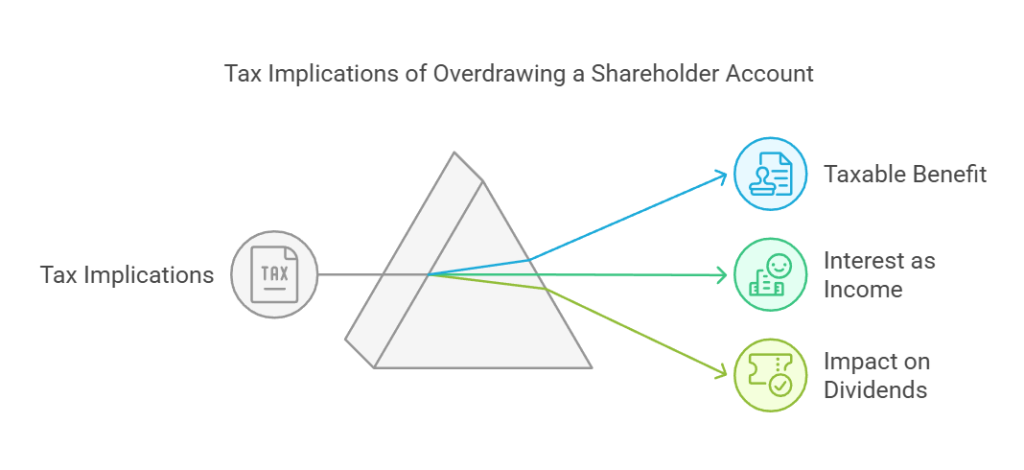When you hear “shareholder current account interest rate,” you might think it sounds a little dry, right? But hang on – it’s more important than you think. If you’re a shareholder or running a business, understanding how interest plays into these accounts can save you some serious headaches down the track.
So, what’s the deal with shareholder current accounts, and do they actually earn interest? You’ve probably wondered. Let’s break it down, get to the bottom of those interest rates, and figure out what to do if your account goes off the rails. Trust me, it’s not as complicated as it sounds, and I’ll walk you through it!

What is a shareholder current account and how Does it work?
Definition and key features of a shareholder current account
Alright, let’s start with the basics. A shareholder current account is basically a personal account linked to the company. Think of it as a business loan – either the company owes you money, or you owe the company. It’s a two-way street. If you, as a shareholder, contribute money to the company (like funding a project or covering operating expenses), this will show up in your shareholder current account as a credit. If you take money out (often called drawings), it gets listed as a debit. Simple enough, right?
The role of shareholder current accounts in business transactions
But why does this account matter? It helps keep track of all the financial back-and-forth between you and the business. For example, let’s say you’ve put $5,000 into the company for a new project. Your account shows a credit of $5,000. But a few months down the track, you take out $2,000 for personal use. Your shareholder current account now reflects that you owe the company $2,000 – clear as day, right?
This helps your accountant (and you) keep everything in check, and ensures that any financial movements between you and the company are documented. Why is this important? Because without it, things can get messy real quick, especially if you’re trying to figure out your tax obligations later on.

Do shareholder current accounts earn interest?
When does a shareholder current account earn interest?
Now, here’s the burning question: Do shareholder current accounts actually earn interest? The short answer? Sometimes. But it depends on a few factors. If you’re lending money to the company through the account, or if the account balance stays positive for a while, you may start to see interest being applied. However, it’s not automatic, and it’s not always a lot. The interest rate is usually pretty low compared to what you’d get in a high-interest savings account, but hey – it’s still better than nothing!
How is interest calculated on shareholder current accounts?
Interest on shareholder current accounts isn’t as straightforward as, say, a personal savings account. It can vary based on the agreement between you and the company. Some businesses may pay you interest, while others won’t. If interest is charged, it’s usually based on a fixed or floating rate and could be influenced by the company’s financial health or market conditions.
Here’s a table breaking down the key factors:
| Factor | Explanation | Example |
|---|---|---|
| Company Agreement | Some businesses agree to pay interest on shareholder accounts. | If the agreement is 2%, the interest will be calculated at 2% of the balance. |
| Account Balance | Higher balances may earn interest, especially if the company is holding a significant amount of money. | If you have $10,000 in your account and the interest rate is 2%, you’d earn $200 annually. |
| Type of Interest Rate | Fixed or floating rates may apply depending on company policy or market conditions. | A fixed 2% rate means you’ll get the same interest year on year. A floating rate might change based on inflation or the company’s financial situation. |
| Tax Implications | Interest earned might be subject to tax, depending on your country’s regulations. | In NZ, any interest earned on the shareholder account would likely need to be declared for tax purposes. |
This table should help you understand how interest is applied (or not) to your shareholder current account, and what to expect if you’re trying to earn a little extra on your balance.
Managing an overdrawn shareholder current account and tax implications
What happens when a shareholder’s account is overdrawn?
Uh-oh. Things can get a bit tricky if your shareholder current account goes overdrawn. This means you’ve taken out more money than you’ve put in. In simple terms, you owe the company money, and that needs to be sorted quickly. If it’s not managed, you could face consequences, such as extra interest charges or tax issues down the line.
Here’s what you need to know about managing an overdrawn account:
- Interest Charges: Many companies charge interest on overdrawn accounts. This could be at a higher rate than regular shareholder loans to encourage repayment. Example: If your account is overdrawn by $2,000 and the interest rate is 5%, you could be looking at an additional $100 interest charge per year. Not ideal, right?
- Repayment Schedule: The company may set a repayment schedule to help you pay back what you owe, potentially over several months or even years. Example: If you owe $3,000 and agree to pay it back over 12 months, you’d need to pay $250 per month, plus any interest charges.
- Legal Consequences: If you don’t pay back an overdrawn account, the company could take legal action or request repayment through other means (e.g., dividends). Example: A company might withhold future dividends until the overdrawn amount is settled.

Tax implications of overdrawing a shareholder current account
When you overdraw your account, there’s also a tax impact to consider. The tax implications can vary depending on the amount you owe and how long the account stays overdrawn. Here’s how to handle it:
- Taxable Benefit: If you owe money to the company for a long time, the IRD may consider it a benefit you’ve received, which could make it taxable. Example: If your overdrawn account is sitting at $5,000 for an extended period, the IRD might treat it as a loan and apply fringe benefit tax (FBT), meaning you could be taxed on the value of that loan.
- Interest as Income: If you’re being charged interest on your overdrawn balance, that interest might be considered income for tax purposes, so it will need to be declared. Example: If the company charges you $100 in interest on your overdrawn account, that $100 is likely taxable income for the company and could affect your personal taxes too.
- Impact on Dividends: The company might withhold dividends or apply them toward paying off the overdrawn balance, which can affect your tax obligations if you’re receiving income from dividends. Example: If the company owes you a dividend of $1,000 but you owe $800 in an overdrawn account, the company could offset the dividend, leaving you with $200.
FAQ Section:
Do shareholder current accounts earn interest?
Short answer: Sometimes. Whether your shareholder current account earns interest depends on the company’s policy. If it does, the interest rate is typically lower than what you might see with savings accounts, but it’s still worth keeping an eye on!
What happens if a shareholder’s account is overdrawn?
If your account goes overdrawn, you essentially owe the company money. This can lead to interest charges, legal consequences, and potentially some awkward conversations. The best approach? Pay it back quickly to avoid any nasty surprises!
Are drawings from a shareholder current account taxable?
Yes, shareholder drawings are generally taxable. When you take money out of the company for personal use, it’s often treated like a loan or a distribution. Depending on your tax situation, you may need to report it and pay taxes on it.
Do shareholders have to pay interest on an overdrawn account?
Yep, most companies will charge interest on an overdrawn shareholder current account. It’s usually at a higher rate than regular loans, so you definitely want to keep track of your balance to avoid that interest stacking up.
How can I fix an overdrawn shareholder current account?
The first step is to repay the amount you owe as soon as possible. You can either pay it back in full or set up a repayment plan with the company. Either way, getting it sorted quickly will save you from extra charges and tax headaches.
Conclusion:
Managing your shareholder current account doesn’t have to be complicated. Whether you’re contributing funds, taking out drawings, or dealing with an overdrawn account, understanding how it all works—and the interest that might come with it—will save you time, stress, and maybe even a few surprises. Remember, keeping track of your account balance and any interest accrual is key to staying on top of your tax obligations and ensuring smooth business transactions. If you’re ever in doubt, don’t hesitate to talk to your accountant. Getting it right now can help you avoid issues with taxable income and even dividends down the road.
